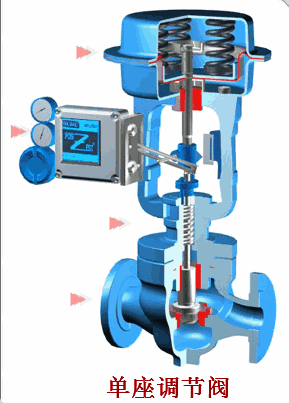
Have you learned how to select valves based on the medium flow rate meter?
The flow rate and flow rate of a valve mainly depend on the diameter of the valve, and are also related to the resistance of the valve structure to the medium. At the same time, they are inherently related to various factors such as valve pressure, temperature, and medium concentration.

The flow channel area of a valve is directly related to the flow rate and flow rate, which are interdependent quantities. When the flow rate is constant, the larger the flow rate, the smaller the channel area; If the flow rate is small, the flow channel area can be larger. On the contrary, if the flow channel area is large, its flow velocity is small; The flow channel has a small area and a high flow velocity. The flow rate of the medium is large, and the valve diameter can be smaller, but the resistance loss is large, and the valve is prone to damage. High flow rate can cause electrostatic effects on flammable and explosive media, causing danger; The flow rate is too small, the efficiency is low, and it is not economical. For media with high viscosity and explosive properties, a smaller flow rate should be taken. The flow rate of oil and liquids with high viscosity is selected according to the viscosity, generally ranging from 0.1 to 2m/s.
In general, the flow rate is known, and the flow rate can be determined by experience.
The commonly used flow rates for various media are shown in Table 2-2. The nominal diameter of the valve can be calculated through flow rate and flow rate.
Valves with the same diameter have different structural types and fluid resistance. Under the same conditions, the larger the resistance coefficient of the valve, the more the flow rate and flow rate of the fluid passing through the valve decrease; The smaller the resistance coefficient of the valve, the less the decrease in flow rate and flow rate of the fluid passing through the valve. The flow rates of common media are shown in Table 2-2.
| Liquid name | Conditions of Use |
velocity of flow
(m/s)
|
| Saturated steam |
DN>200
DN=200~100
DN<100
|
30~40
25~35
15~30
|
| superheated steam |
DN>200
DN=200~100
DN<100
|
40~60
30~50
20~40
|
|
low-pressure steam
|
p<1.0 | 15~20 |
| Medium pressure steam | P=1.0~4.0 | 20~40 |
| high pressure steam | P=4.0~12.0 | 40~60 |
| compressed gas |
vacuum
P≤0.3
P=0.3~0.6
P=0.6~1.0
P=1.0~2.0
P=2.0~30
P=3.0~30.0
|
5~10
8~12
10~20
10~15
8~12
3~6
0.5~3
|
| oxygen |
vacuum
P=0~0.05
P=0.05~0.6
P=0.6~1.0
P=1.0~2.0
P=2.0~3.0
|
5~10
7~8
4~6
4~5
3~4
|
| coal gas | / | 2.5~15 |
| semi-water gas | P=0.1~0.15 | 10~15 |
| natural gas | / | 30 |
| nitrogen | P=5~10 | 15~25 |
| helium |
vacuum
P<0.3
P<0.6
P≤2
|
15~25
8~15
10~20
3~8
|
| Sodium radon oxide |
Concentration 0-30%
Concentration 30%~505
Concentration 50%~73%
|
2
1.5
1.2
|
| sulfuric acid |
Concentration 88%~93%
Concentration 93%~100%
|
1.2
1.2
|
| hydrochloric acid | / | 1.5 |
| tap-water |
Supervisor P=0.3 (gauge pressure)
Branch P=0.3 (gauge pressure)
|
1.5~3.5
1~1.5
|
| steam condensate | / | 0.5~1.5 |
| Seawater, slightly alkaline water | P<0.6 | 1.5~2.5 |
|
Sodium radon oxide
|
Concentration 0-30%
Concentration 30%~505
Concentration 50%~73%
|
2
1.5
1.2
|
Note: The unit of DN value is: mm; Ρ The unit of value is: MPa.
The resistance coefficient of the gate valve is small, only within the range of 0.1 to 1.5; A large diameter gate valve with a resistance coefficient of 0.2-0.5; The resistance coefficient of the shrinkage gate valve is higher. The resistance coefficient of a shut-off valve is much larger than that of a gate valve, usually between 4 and 7. The Y-type globe valve (direct current type) has the smallest resistance coefficient, ranging from 1.5 to 2. The resistance coefficient of forged steel globe valves is the highest, even up to 8.
The resistance coefficient of check valves depends on their structure: swing check valves are usually around 0.8-2, with multi disc swing check valves having a higher resistance coefficient; The lift check valve has the highest resistance coefficient, up to 12.
The resistance coefficient of the plug valve is small, usually around 0.4 to 1.2.
The resistance coefficient of diaphragm valves is generally around 2.3.
The resistance coefficient of butterfly valves is small, usually within 0.5.
The resistance coefficient of ball valves is the smallest, usually around 0.1.
The resistance coefficient of the above valve is the value under the fully open state of the valve.
The selection of valve diameter should take into account the machining accuracy and dimensional deviation of the valve, as well as other factors affecting it. The valve diameter should have a certain margin, usually 15%. In practical work, the valve diameter depends on the diameter of the process pipeline.
Categories
Recent Posts
Copyright © 2024 Tonglu Yongxin Valve Co.,Ltd.All Rights Reserved. Powered by dyyseo.com

IPv6 network supported